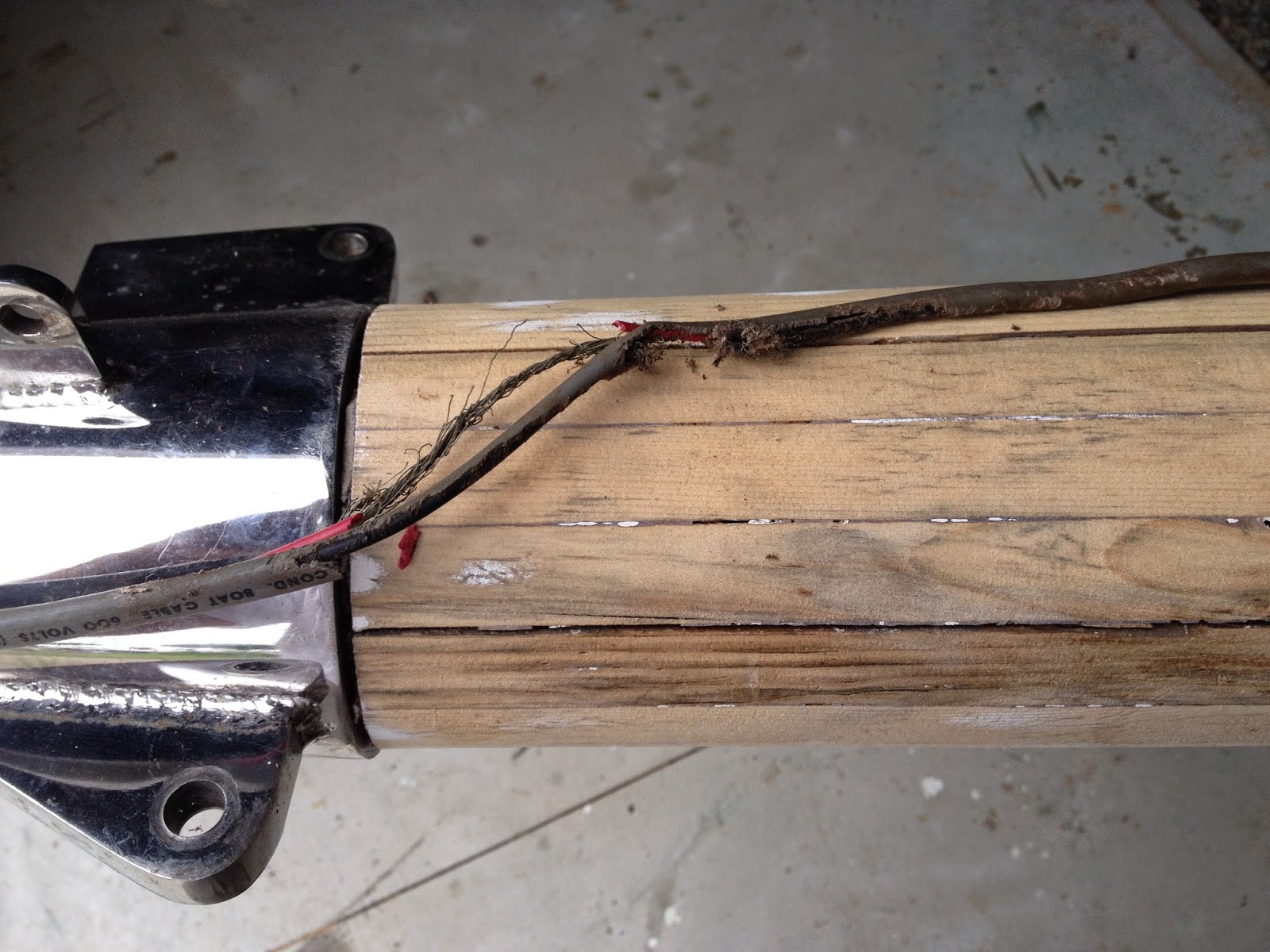ORIGIN OF THE DESIGN
Anyone familiar with Friendship Sloops is familiar with its burgee However, less familiar is why it is adorned with what appears to be a vine of spade-like leaves - an odd symbol for a fishing sloop. So, I wanted to know why the burgee sported this particular design, what leaf it was and why that leaf?
What I found out was interesting: No one knows.
There is nothing about the origin of the burgee in any of the Society's publications: It's a Friendship, Enduring Friendships, and the most recent publication Lasting Friendships.
Here's what we do know: The Constitution of the Friendship Sloop Society (FSS) dictates: "The burgee of the Society shall be a pennant with the fly one an one-half times the hoist, consisting of a black leaf design on a white field with a red boarder." (Article VIII).
The Society's annual yearbook for 1967 comes a bit closer to the mark:
The leaf pattern on the pennant is derived from the original trailboards of the Friendship Sloops. So far as we can discover, all the Morse, McClains, Carters and other original builders, and even the present day builders have used this vine design on their trailboards . . . .
Carvings of vines or scrollwork on trailboards make sense. A trailboard is long and thin and lends itself to that sort of design. However, arabesques of vines on trailboards are not new - they predate Friendship Sloops by at least a century.
In his book Figureheads and Ship Carving, Michael Stammers writes,
[From the 1790's] the trailboards . . .took on an important role. It began carrying more carvings from the base of the figurehead to the main parts of the hull. This had the pleasing effect of visually integrating the figurehead with the rest of the hull. The usual motif was some kind of foliage such as laurels as a symbol of victory, oak leaves as a symbol of strength, acanthus and thistle as symbols of life, mortality and punishment or vine leaves with symbols of grapes as symbols of plenty. These leaf forms were frequently carved in Rococo style with C and S shapes, diverging leaves and elongated stems.It is no secret that the clipper bow of the Friendship was patterned after the Gloucester fishing schooners that patterned their bows after clipper ships, etc. It follows then, that the makers of Friendships were simply adorning their trailboards with a design as had been done for years.
BUT A DESIGN OF WHAT?
 |
| Grape Leaf |
Here is where the 1967 FSS yearbook fails us. Regarding the type of leaf/vine it notes: "[M]uch research has not turned up the reason for the vine. Our delving into the use of this particular pattern has only served to produce a discussion as to whether this is a vine or grape leaf design, but nothing as to the origin."
 |
| Olive Leaf |
 |
| Cherry Blossom |
So, Olives? Grapes? or Cherries? Which is it? That answer lies deep in still waters and is likely to remain there. However, the notion that there ever was an answer doesn't bear up when one considers the origin of the sloop and the conventions of the day.
First, with the exception of the Dictator model, this is not a one class design. There never was a defined set of specs for what makes a Friendship a Friendship. If the original builders didn't try to agree on overall dimensions and specs, it strains credibility that they would agree that all Friendships "shall have a vine of grapes (or whatever) adorning their trailboards." Second, these were fishing boats - not a lot of mucking about with ornate scroll work. Build 'em, Splash 'em, Fish 'em, Sell 'em.
It seems more likely that each builder did what they wanted to do - or maybe had their own signature design as Time-Life suggests of McClain.
 |
| Trailboard Design - Desiree |
 |
| Ivy |
What I can write is that the trailboard for Desiree appears to be ivy which, I warily point out, also appears to be the closest match to the burgee .
And one internet source had this to say about the meaning of ivy:
The Celtic meaning of the ivy deals with connections and friendships because of its propensity to interweave in growth. Ever furrowing and intertwining, the ivy is an example of the twists and turns our friendships take - but also a testimony to the long-lasting connections and bonds we form with our friends that last over the years.
Hmmmm, "Lasting Friendships." What a good name for a book.
Buy yours today from fss.org
Buy yours today from fss.org
Notes:
1. I am indebted to John Wojcik of the FSS for hunting down the references to the origin of the burgee design in the FSS publications.
2. Lasting Friendships: A Century of Friendship Sloops, TBR Walsh & Ralph Stanley, Friendship Sloop Society (2014)
3. Friendship Sloops, Roger Duncan, International Marine (1985)
4. It's a Friendship, Herald Jones, Friendship Sloop Society (1965)
5. Friendship Sloop Society Annual Yearbook, Friendship Sloop Society (1967)
6. Figureheads and Ship Carvings, Michael Stammers, Naval Institute Press (2005)
7. The Classic Boat, Time-Life (1977)
8. www.celticradio.net











